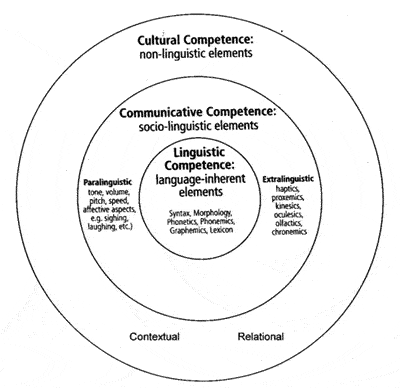The following is a summary of a presentation given at ISIT. The talk was at the invitation of CRATIL (Centre de Recherche Appliquée sur la Traduction, l’Interprétation et le Langage) In attendance were the current 4th years students from ISIT and faculty members both from within the institute and beyond. The goal of the presentation was to introduce the notion of cross-culture studies through a learner-centred and experiential pedagogical approach.
THE paradox, mentioned in the title is common to most courses on cross-culture comes from the works of E. T. Hall and others. It is essential early on in such a course to emphasize the necessity of looking inward to one’s own culture. Most students come with expectations of learning ‘facts’ about other cultures. The courses taught at ISIT overwhelmingly lead the students to focus on their Frenchness (or whatever their origin may be) as a first step in understanding culture and managing culture awareness.
In this presentation we began with the iceberg model of culture which lends itself well to the idea of looking below the surface, or inward.

As the students could see, it is a useful metaphor for locating one’s own culture : most of it is hidden from us and those elements that are below the surface are those that are most difficult for us to access and verbalize. We often find it easier to spot the ‘foreign’ behaviours, but even when noticing them, we fail to get below the surface where the important cultural information lies. We rarely look, however, even at the surface of our own culture ; there is so little need to, as it is all so familiar and normal to us. To further stress the notion of unconscious and hidden culture, we turned our attention a second model, taken from the work of Geert Hofstede.

This model is particularly useful for introducing the concept of convergence and divergence. There was a good deal of discussion on the extent to which our behavioural patterns are learnt (and unconscious) despite the fact that the ability or capacity is biological. As one would expect at ISIT an immediate example was speech and language.
When asked for stereotypes of how Americans speak on public transport in Paris (both a stereotype and experience most of the students had had), the response was ‘loudly’. The students were then asked to formalize the ‘rules’ for correct volume in conversation in France and the immediate response ‘there aren’t any’, which helped to reinforce the idea that our own rules are submerged within us out of our conscious awareness, while an awareness of another culture is easily accessible. Naturally once the participants began to reflect they began to generate lists of ‘rules’ based on where one was and with whom one was speaking. Hofstede’s model is especially useful in allowing students to reflect on our perceptual patterns as a learnt product of our culture. The following simple experiment was performed.

The participants were asked to quickly imagine a story where they were obliged to use the stairs. A rapid survey of the stories revealed that an overwhelming majority ‘climbed up’ the stairs in their story. When told that the majority of people in Egypt or Morocco (for example) ‘walk down’ the stairs in their imaginary story, it became easy to grasp the idea that our learning experience has an impact on our perceptual patterns. Different cultures have different learning experiences so understandably variations in perceptual patterns will occur - the realization that someone sitting next to you may be focusing on an entirely different point was a useful experience for many in attendance.
The final part of the presentation concerned Hall’s model of developing cultural competence.

By focusing on haptics, we were able to come full circle in the ideas presented. The final discussion question was ‘rules for holding hands’ in France. The where, but especially with who, allowed us to discuss society’s norms for age and gender concerning holding hands. By viewing photos taken from the internet it was possible to draw the conclusion that one cannot know all the rules even for one’s own culture, one must always take into consideration the context and the relationship of the people involved. Our accumulated experience over time in our own culture permits us to negotiate an appropriate response. It is exactly that accumulated experience over time that we may lack in a new culture that could result in an inability to release the desired response, the ultimate goal in cultural competence.
Copyright 2011-Matejovsky/Diploweb.com
Sources
Bennett Milton J. Basic Concepts of Intercultural Communication : Selected Readings. Intercultural Press, Yarmouth. 1998.
Hall, E.T. and Mildred Reed Hall. Understanding Cultural Differences. Intercultural Press, Yarmouth. 1990
Hofstede, Geert. Culture’s Consequences : Comparing Values, Behaviors, Institutions and Organizations across Nations, Second edition. Sage, Thousand Oaks. 2001.











